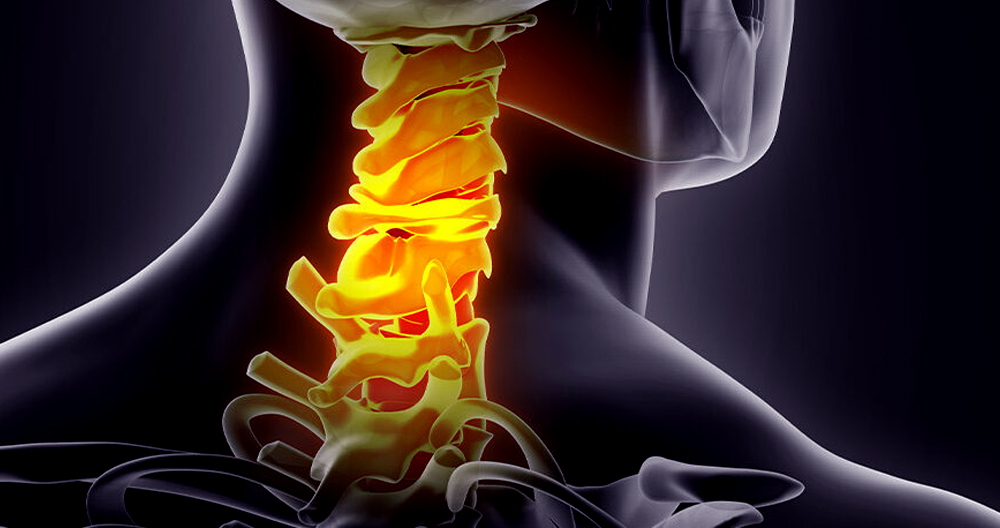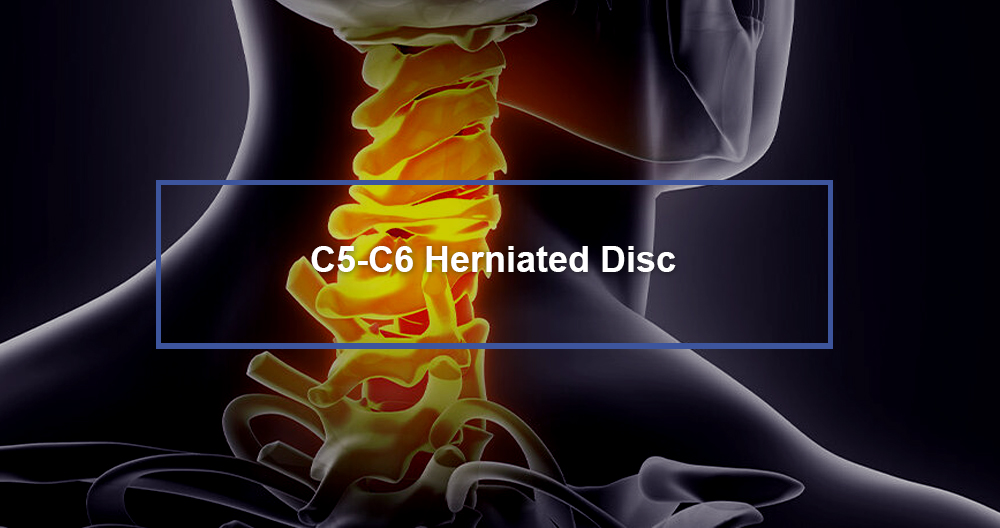What is the C5 & C6?
The C5-C6 vertebrae of a spine are sometimes called the stress vertebrae because they carry the majority weight of the head and neck. Both the C5 as well as C6 have a vertebral body, a spine arch, and two transverse processes. When they join, they create paired synovial facet joints that are gliding and gliding. On the C5’s joint surfaces, there are articulating cartilages.
C6 vertebrae are designed to facilitate smooth movement and minimize resistance between the facet joints surfaces. The disc is the largest spine joint. The disc holds 85% of the weight, while 15% is passed through the C5-6 segment. A herniated disc at the c5-6 spine level can result in weakness in the arms and wrist extensors muscles, along with numbness and burning sensations that radiate to the thumb or fingertips. C5-c6 is the most common level where cervical disc herniation can occur.
A c5-6 herniated disc can damage the nerves controlling the muscles of the arms, neck, shoulders and hands. It also affects the brain, eyes, ears, thyroid gland, head, nose, ears and throat. C5-c6 disc herniations can cause pain in the neck and other symptoms. The symptoms of c5-6 disc herniation include numbness or tingling, burning and weakness.
The C5–C6 spinal motion segment is located just above the cervical vertebra in the lower cervical spine. It provides flexibility and support for the neck and most of the head. Because of its high load-bearing capacity, the C5-6 motion segment is often affected by poor posture and degeneration, disc herniation or radicular pain.
The following structures make up the C5-C6 segment of spinal motion:
The C5 and the C6 vertebrae. These vertebrae consist of a vertebral body, a vertebral arch, as well as 2 transverse processes. These components form synovial facet joint pairs with smooth, gliding movements. The joint surfaces have articulating cartilages that provide smooth movement and protect the friction between the C5-C6 vertebrae at each side. The vertebrae are joined by ligaments, which attach one vertebra at a different attachment point.
Cervical Vertebrae
C5-C6 intervertebral disc. The disc is made of a gel-like material (nucleus pulposus), and is enclosed by a thick fibrous band (annulus fibrosus). It is located between the vertebral body of C5 & C6. This disc protects the vertebrae against grinding during neck movements and allows movement in all directions.
C6 spinal cord. The C6 spinal nerve is located between C5-6. It exits the spine cord through a small bone opening called the intervertebral Foramen. The C6 nerve contains both a sensory root as well as a motor root. The C6 epidermome is a part of the skin that feels sensations from the C6 nerve. This dermatome comprises the skin on the thumb side of the thumb and the forearm.
A C6 myotome describes a group or muscles controlled by a C6 nerve. These muscles include the wrist extensor muscle, which allows the wrist to bend forward; and the supinator and biceps muscles of the upper arms, which help bend the elbow. The spinal canal covers the spinal cord with the vertebral body at the front and back. Bony tunnels that run up either side protect the vertebral vessels.
What causes C5-C6 disc herniation
A herniated disc can be caused by trauma or an injury such as an auto accident or work injury. This condition can be very bothersome and painful, whether it’s from an accident or lifting heavy items. These and other back conditions can also have a genetic component. You may be more likely to develop disc herniation if your family has suffered from back pain or bulging discs.
Common Problems in C5-C6
These injuries and disorders are common in the C5-C6 segment of the motion segment:
- Disc problems. Common disc problems. Sometimes, C5-C6 discs can be affected by traumatic degeneration after whiplash injuries.6 This disc problem is often the source of C6 radicular nerve pain.
- Spondylosis. Spondylosis.
- Fracture. Fracture.
- Congenital stenosis. Due to an inherited genetic trait, the C5 vertebra has a higher risk of spinal canal obstruction than vertebrae lower down in the cervical spine.
- Rarely, tumors may cause damage to the C5-6 vertebrae or spinal segment.
Common Signs and Symptoms stemming from C5-C6
The symptoms of vertebral or disc pain C5-C6 could be sudden after an injury or gradual increase over time. A dull ache, or sharp pain, may be felt behind the neck. You may notice a decrease in the range of motion in your neck. Crepitus can occur when the neck moves.
It is quite common to experience compression or inflammation of the spinal nerve C6. This can lead to other symptoms, such as:
- Pain in the upper arm, shoulder, thumb, hand, forearm, forearm, thumb, and index finger.8-9 Sometimes the pain can radiate from the neck to the arm.
- Numbness at the thumb and index fingers, as well as the outer forearm.
- 8.10
You may experience symptoms on one side or both. Injury to the C5-6 level of the spinal cord can result in paralysis or pain in the arms and/or legs. Some cases may result in loss of bladder control and breathing problems. Pain that originates from C5 to C6 can often be treated first with non-surgical methods. In rare cases, surgery might be necessary.
C5-C6 Recovery Time and Treatment
There are many options for non-surgical treatments to treat C5-C6 disc herniation. Each option comes with its own pros and cons. The recovery time will vary depending upon the chosen course of action. They include prescription medication and injections that aim to reach complete spine wellness.
After diagnosis, the surgeon will determine the most effective treatment option for herniated disc condition. Sometimes, minor symptoms such as C5-C6 disc herniation can be alleviated by a simple posture change supported by neck braces. Manual therapy is an option. Patients can recover in days or even weeks.
Surgery is the best treatment for advanced cases. This includes neck pain that lasts more than 2 months, severe paralysis and arm or leg weakness. The surgical options for C5-C6 herniated spines are very different from the non-surgical ones. When considering the various options available, it is a good idea to seek out information from experienced surgeons. The final choice of procedure should not be based on disc condition alone, but also the overall impact on the spine health and well-being.
The surgical treatments for herniated discs at C5-6 include minimally-invasive endoscopic laser repairs, spinal fusion, or artificial discs. For spinal fusions such as ACDF (anterior cervical discectomy and fusion), and PCDF (posterior neck decompression, and fusion), large incisions and plates with metal screws and plates are required. There is also a long recovery period that requires opioid painkillers and long absences from work. Artificial discs can rupture or fuse from the inflammation that they cause.
C5-C6 Exercises
Many physical exercises can be used to strengthen the cervical spine, reduce neck stiffness, and improve neck strength. You can do resistance exercises or neck stretches to loosen your neck muscles. Poor posture is one cause of C5-6 disc herniation. It is possible to prevent neck and spine problems by improving work posture and sleep head positioning. Look into contour pillows and ergonomic chairs with special features that support the neck curvature. These lifestyle changes make a significant difference in the health of your spine.


